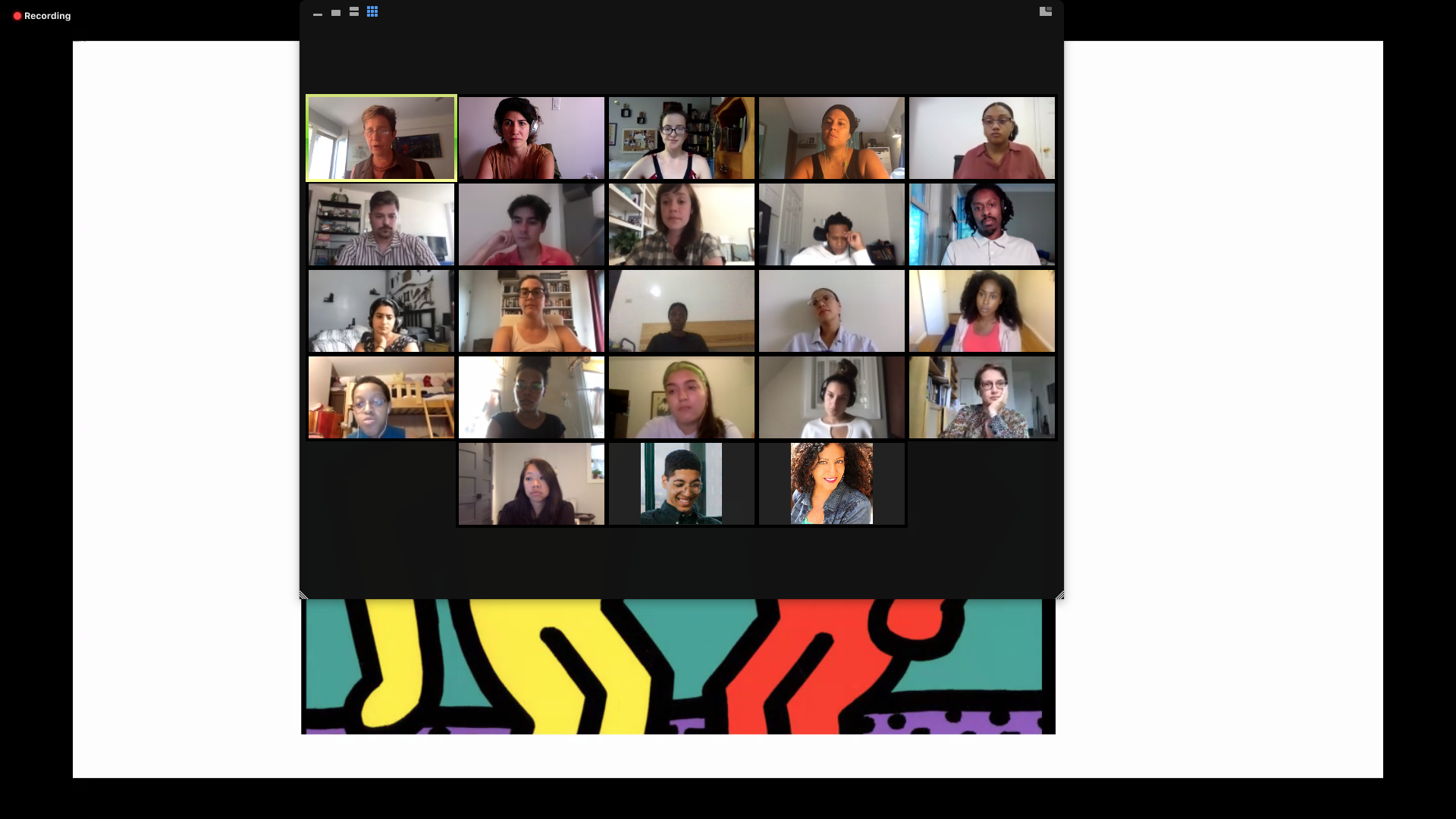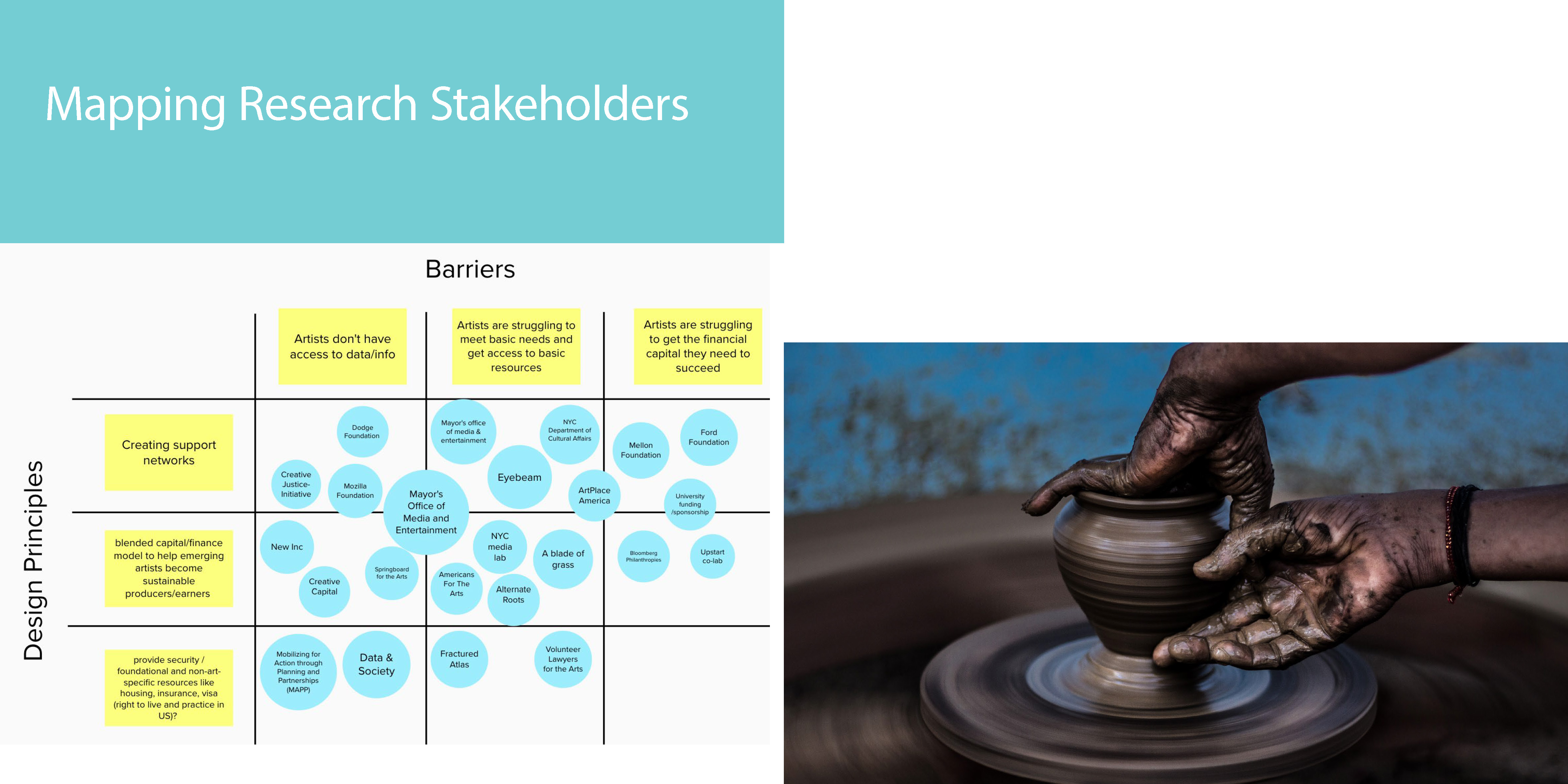Impact Entrepreneurship Fellowship
Design Thinking
Product Design
Entrepreneurship
Design Thinking
Product Design
Entrepreneurship
Exploring the challenge of "How might we help enhance resource flows to support (immigrant) artistic communities in NYC?" through design thinking, equity-centered design, research, data analysis, personas, ashoka innovation landscape, systems map, theory of change, and value proposition map.
Sep - Dec 2020
Supporting Immigrant Artists Impact Project









Case Study
The Challenge
| The research started off by a different challenge statement which was questioned and refined until I came to the current “how might we?” |
| Did many iterations on the questions I assumed there's a need to solve and resorted to the current after identifying potential areas with challenges |
I narrowed the scope down to immigrant artistsand did further refinement & research, which lead to identifying our key challenge areas
Exploring the challenge of "How might we help enhance resource flows to support (immigrant) artistic communities in NYC?"
This challenge stems from a variety of systemic issues that have prevented immigrant artists from gaining the physical resources, financial resources, and skill-based resources they need to succeed and thrive.
This challenge stems from a variety of systemic issues that have prevented immigrant artists from gaining the physical resources, financial resources, and skill-based resources they need to succeed and thrive.
| Spaces support |
| as in places to perform, places to work, places to live, places to exhibit |
| Financial |
| Monetary day-to-day finances, or project financing |
| Economic: as artists are often not seen as economic drivers in society, hence they are often left out of the decision making process to "fund". |
| Closing the gap of finding access to innovative financing mechanisms for funders |
| Skills based support |
| Understanding the industries within the arts & culture and how they need help, which is more than competitions with a one time $ prize |
| Integrating them into the existing business landscape & providing them with the networks of support and opportunities for enhaning their skills of promoting themselves & their work. |
Asked myself the question, why is this an unmet need?
Arts and culture is often left out of the initial funding process for public service and data is usually geared toward providing evidence through quantitative measurement
such as lives saved, people fed, number of houses created. There is little data centered on the need for arts and culture & the social resturn on investment in that area.
Mapping Empowerment
Barriers & Design Principles
My research design is based on and geared towards having community based decision making
and having an equitable process of data collection
How can we empower artists and what are the inter-relational elements that we can have some control on?
Theory of Change
Barriers
The barriers to this population are deep, and are embedded in systemic structures that fight against these populations to have sustainable futures in America. As it is, artists themselves in America are often not considered as "essential" when it comes to government funding, city planning, or business development. They struggle to meet basic needs and get access to resources. Many artists are considered "gig workers" often holding multiple jobs at a time that do not have benefits. They must pay for their own healthcare and find their own ways to save for retirement.
Funding sources are complicated and often require certain levels of citizenship that immigrant artists may not have. These populations might struggle with forming partnerships as there is a barrier between them and institutions that can be attributed to language barriers, conversation barriers, and just general access issues to these business populations. Furthermore, when the government or businesses are looking into who to accept into America, there is little data that proves the case of economic value through artists.
created these design principles in repsonse to the barriers that are facing immigrant artisits in general
| creating support netwoks -- setting up a co-production/collaboration with existing business can help artists overcome the financial barrier of regular income |
| language barriers for immigrants artists and the way to overcome them would be by having access to sources in different languages |
| systemic government issues of funneling support and distrubution of funds from other entities |
Leading to 3 main topics to tackle
| How can we create more community centric networks of support for artists |
| How can we create a blended capital/finance model to help emerging artists to have more sustainable income |
| How can we provide security and a better standard of living and resources such as housing, insurance, visa (right to live and practice in US)? |
Research Methods
I used a combination of primary sources through interviews of arts organizations and arts leaders in NYC as well as secondary research through data collected in NYC Open Access Data, New York City Department of Cultural Affairs, and articles/blogs on data collection in the arts
existing data, input from experts in the field
online research for existing organizations and efforts providing services, solutions, or support
Stakeholders in a nutshell
Arts and culture actors in New York City: musicians, museums, visual artists, literary artists, craftsmen etc. that need support with funding. Including small organizations and community led projects.
Policy makers or funders
Arts & arts support organizations fully or partially rely on funds from private and public institutions to carry out their activities.
Interviewees

Value Proposition Canvas

Equity-Centered Design


